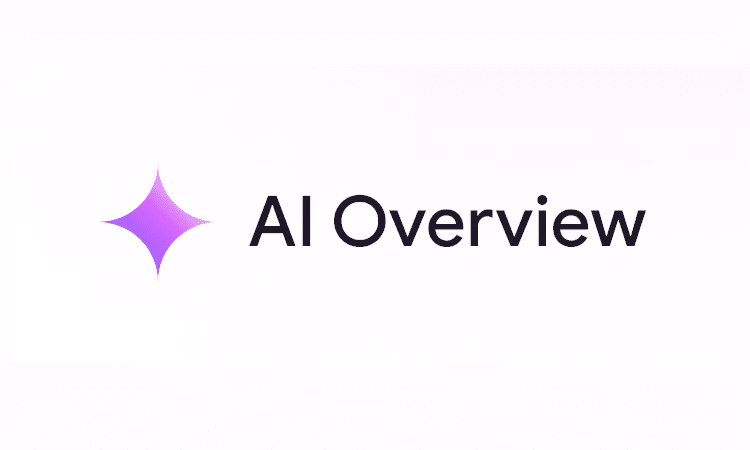Content Gap Analysis: What Is It And How to Do One In 5 Steps

Any discrepancy between the content your audience desires and what is actually available on your website is known as a content gap. The practice of assessing a content topic to see if there are any chances to cover it more thoroughly is known as a content gap study. Identifying and fixing these gaps might help you generate greater results with your content strategy. Additionally, provide your audience more value. Content gap analysis is the process of identifying topics, keywords, and questions that your target audience is searching for, but your website doesn’t sufficiently cover. It involves analyzing your own content as well as your competitors’ to find opportunities to create new content or optimize existing pages to better meet searcher intent and outrank your rivals. Why conduct a content gap analysis? Identify unexplored keyword opportunitiesYou can find keywords that your rivals are ranking for but you aren’t by using content gap analysis. You may increase your organic reach and attract more qualified visitors to your website by seeing these chances and producing content that is specifically tailored to rank for them. Determine the content of competitors’ weaknesses.Every piece of content is not flawless. In addition to highlighting your competitors’ strengths, content gap analysis highlights areas in which their material is lacking. These results can be used to produce more thorough, worthwhile content that surpasses that of your rivals and better meets the needs of your intended audience. Help with prioritizing and content planningChoosing what to create next can be overwhelming due to the limitless choices for content. A data-driven methodology for ranking content production according to the subjects and keywords with the highest potential for organic traffic and conversions is offered by content gap analysis. Boost your niche’s topical authorityWebsites that exhibit knowledge and authority on a certain subject are given preference by Google. You may increase your site’s topical authority and raise your chances of ranking for related keywords by systematically addressing content gaps and producing in-depth materials on important subjects in your niche. Content gap types Typical content gaps consist of: Topic Gaps Topic gaps take a broad view. This occurs when your material falls short in covering general topics or themes. For instance, content on meal planning, meal prep, repurposing leftovers, and item substitution could be produced by a creative who specializes in learning how to cook on a budget. One thing she hasn’t covered? discounts and coupons. Coupons are the “topic gap” in this case. keywords Gaps Topic gaps inevitably give way to keyword gaps, which happen when your material doesn’t address the terms that prospective buyers use when searching online. Reduced web traffic and, eventually, fewer individuals in your sales and marketing funnels are the results of this disparity. The course teacher, who has now recognized couponing as a significant topic gap, can start looking for keywords to incorporate into her SEO plan by using the previous example. “How to find local coupons in New York,” “how to stack coupons at Target,” “couponing for beginners,” and “what are the best websites for coupons?” are some examples of keywords she may use. Media GapA lack of diversity in the forms of content is referred to as media gap. Text, images, videos, and audio are examples of content types. Since content marketing is a massive and expensive endeavor, organizations frequently concentrate all of their meager resources on just one kind. Regretfully, this may result in a sizable percentage of your clients becoming dissatisfied. While some customers prefer podcasts and audiobooks, others prefer written communication, including blog posts and emails. You’re essentially telling the rest of your audience to keep looking elsewhere for the media type they require if you only concentrate on one or two types. Format GapThe way your content is presented is referred to as format gaps. Email newsletters, SMS text messages, blog entries, e-books, how-to manuals, and templates are a few examples of text content. Format gaps have the same potential to exclude some segments of your audience as media gaps do. For instance, not everyone is interested in reading an email newsletter. An ebook or in-depth blog post is preferred by some. Six Steps to Conducting Content Gap Analysis Finding methods to figure out what kind of contents your audience wants but you aren’t creating right now is essential to performing a content gap analysis correctly. Without a sense of direction, this can be a daunting task. For this reason, we divided the procedure into these six easily absorbed steps. Step 1: Understanding the Buyer’s Journey The buyer’s journey has four stages: Awareness, Consideration, Decision, and Success. Mapping the journey ensures targeted content, effective keywords, and fills content gaps, boosting engagement and sales. Step 2: Conduct Market and keyword research. You can start researching your target market and the terms your audience uses in pertinent searches once you have a firm grasp of your customer journey. There are two steps in this process: Customer research, competitive analysis, and industry trends are all considered forms of market research. Understanding your target market’s demographics and behaviors, the tactics used by your rivals, and the most recent developments and trends in your target market are all part of your objective. You can use the following tools to aid in your market research: Google Trends, Statista, Pew Research Center, or Semrush. Keyword research is the process of identifying specific search terms your target audience uses during their customer journey, especially during the awareness, consideration, and interest stages. Tools that can help with keyword research include: Semrush, Answer the Public , Ahrefs, Surfer SEO or Moz Keep in mind that keywords aren’t limited to search engines like Google and Bing as you continue your keyword research. Additionally, search engines like YouTube, Pinterest, and Instagram employ keywords. Step 3: Audit your existing content A content gap analysis isn’t just about generating ideas for new content; it’s also about auditing your existing library of content to see if anything’s missing. Also, it’s normal for content to become outdated and irrelevant after a
How to Easily Dominate Your Market: The Essential Local SEO Strategies for Small Businesses

Local SEO is one of the best ways for small businesses and service providers to reach their target audience and become more visible in their community. By optimizing your online presence for local searches, you can stand out in your particular geographic area, connect with local customers, and increase in-store visits or service inquiries. Businesses can greatly increase their chances of ranking high in local search results, including the coveted “local pack,” by using tools like Google Business Profile, local keyword optimization, and customer reviews. Importance of SEO for small business Optimizing your internet presence to draw in more business from relevant local searches is known as local SEO. These searches frequently contain geographic terms like “plumbers in [city name]” or location-specific queries like “near me.” Google reports that 46% of all searches have a local intent, indicating that consumers are actively looking for nearby companies and services. Small companies can engage with these searchers when they are prepared to make a purchase by spending money on local SEO. Local SEO focuses on your particular geographic location, as opposed to general SEO, which aims to increase your website’s visibility on a national or worldwide level. For physical retailers, service providers, and any other company that depends on local clients, this is extremely important. Local SEO Strategies for Small Businesses 1. Optimize Your Google Business Profile (GBP) One of the most important local SEO strategies for small businesses is to optimize your Google Business Profile (GBP, formerly known as GMB). GBP is a free tool from Google that helps you manage your company’s presence on Google Maps and Search. If you optimize your GBP, you can greatly increase your chances of showing up in the local pack (the map and three business listings that appear at the top of Google’s search results for location-based queries) and local search results. To maximize the benefits of your GBP listing: Put Local Keyword Optimization First Local SEO is based on keyword optimization, just like any other SEO technique. You must, however, make sure that your keywords accurately represent both your area and the goods or services you provide for local SEO. The following advice can help with local keyword optimization: Compile and Handle Client Evaluations One important ranking component for local SEO is customer reviews. In addition to improving your reputation, positive reviews tell Google that your company is reliable and pertinent to local searches. Businesses with a lot of good reviews rank higher in Google’s algorithms, thus this is a crucial component of your local SEO approach. Here’s how you handle and promote client testimonials: Create Local References Any reference to your company’s name, address, and phone number (NAP) on other websites is referred to as a citation. By confirming the validity of your company, having regular citations from several reliable websites will help your local SEO. Here are some tips for creating and enhancing local citations: Make Your Website User Experience and Mobile Friendly Since mobile devices account for a sizable percentage of local searches, your website must be user experience (UX) optimized and responsive. Google now employs mobile-first indexing, which means that it ranks and indexes your website primarily using its mobile version. Reduced rankings and lost business can be the outcome of a subpar mobile experience. To make your website mobile-friendly and user-friendly: Produce Locally Targeted Content Websites that offer users useful, pertinent material are rewarded by Google, and this also applies to local SEO. In addition to helping you establish authority, producing content that is especially targeted at your neighborhood increases your chances of ranking for local search terms. Here are some suggestions for locally relevant content: Conclusion Local SEO provides a potent means for small businesses and service providers to establish connections with local clients and expand their operations. You may raise your rankings and increase your visibility to potential clients by making improvements to your Google Business Profile, concentrating on local keyword optimization, collecting client testimonials, and developing a strong local web presence. Recall that local SEO calls for constant attention, tracking, and changes; it is not a one-time endeavor. You’ll be well on your way to controlling your local market if you continue to be involved with your neighborhood and maintain an effective internet presence. Want to outrank the competition in your area? Let Dgazelle handle the local SEO strategies that bring customers right to your doorstep! Our team specializes in driving targeted, local traffic for small businesses through tailored, high-impact SEO techniques. Focus on running your business while we take care of increasing your visibility and dominating your market.
How to identify and Fix 8 Common Technical SEO Issues

As the foundation for your website’s search engine visibility, technical SEO is an essential part of any digital marketing plan. Although backlinks and high-quality content are crucial, they won’t help if your website is beset by technical problems. We will examine the typical technical SEO problems that website owners face in this blog and offer practical fixes to assist you in successfully resolving them. Understanding Technical SEO It’s critical to comprehend what technical SEO comprises before delving into particular concerns. In order for search engines to efficiently crawl and index your website, technical SEO focuses on improving its infrastructure. This covers things like mobile optimization, secure connections, structured data, site speed, and more. Resolving technical SEO difficulties is crucial for both increasing user experience and search engine rankings. Website Crawling Errors In order to fix crawl issues, which might prevent search engines from correctly crawling a website, technical SEO is essential. explore engine bots, often known as crawlers, use crawling to explore the web for fresh or updated content. These bots collect information to index for search results by following links from one page to another. One of the most prevalent technological problems affecting websites is crawl difficulties. These mistakes happen when some pages on your website are inaccessible to search engine bots, which can stop those sites from being indexed. Broken links, server outages, and improper robots.txt file setups are common reasons for crawl problems. Using Google Search Console is the first step in resolving crawl issues. This effective tool will point up any mistakes that Google finds on your website and offer insightful information about how crawlable it is. You can find troublesome URLs and the particular problems affecting them by looking at the Coverage report. After identifying the mistakes, you can take the necessary steps. To find broken links, perform a site audit using tools such as Ahrefs or Screaming Frog. You can use these tools to identify any broken links that might be causing 404 pages. Once broken links have been found, fix or eliminate them as needed. Check with your hosting provider to make sure your server is dependable and that any downtime is kept to a minimum if the problem is caused by server outages. Duplicate Content In order to solve duplicate content problems, which can perplex search engines and lower a website’s ranks, technical SEO is essential. Duplicate content is another common problem in technical SEO. Blocks of text that exist on several URLs are referred to as duplicate content, and they might cause search engines to become confused about which page should rank for particular queries. Your rankings may suffer as a result, and you may lose out on prospects for natural traffic. Using canonical tags is crucial to addressing duplicate content problems. A canonical tag directs search engines on which URL to index by indicating which version of a page is the “master” version. For e-commerce websites that could have several pages for related products, this is especially helpful. Additionally, think about optimizing specific pages to make each one distinct if you discover that they are inadvertently repeating content. Make sure all of your material is unique and helpful to readers by using tools like Copyscape to scan the internet for duplicate content. To move people and search engines from duplicate pages to the main page, put up 301 redirects if needed. Poor Page Loading Speed Page load speed is greatly impacted by technical SEO, which is important for both search engine optimization and user experience. Page load speed is an important consideration for both SEO and user experience in the fast-paced digital world. Because Google uses page speed as a ranking component, slower websites may have higher bounce rates and worse rankings. When a website loads slowly, users are less inclined to stay on it, which can have a big effect on conversion rates. Optimizing images is the first step in improving website load times. It is crucial to compress photos without compromising quality because large image files can significantly slow down your website. For this task, programs like ImageOptim and TinyPNG can be useful. Additionally, make sure the photos are in the right format. PNG is good for graphics with fewer colors, while JPEG is usually preferable for photographs. Performance can also be improved by using browser caching. A user’s browser will load static resources more quickly on subsequent visits. To specify how long browsers should retain these resources, use cache expiration headers. For repeat visitors, this will speed up load times and enhance the user experience in general. Not Making your website mobile friendly By making sure a website is usable, accessible, and responsive, technical SEO plays a critical part in mobile optimization. It is more crucial than ever to make sure your website is fully optimized for mobile devices due to Google’s mobile-first indexing. A bad user experience brought on by a non-responsive design may result in poorer search engine rankings. The first step in mobile optimization is to use a responsive design. Your website will adjust to various screen sizes thanks to responsive design, giving users the best possible viewing experience on all devices. This procedure can be made simpler by using a responsive framework such as Bootstrap. Regularly testing your mobile usability is also crucial. You may check how well your website works on mobile devices with Google’s Mobile-Friendly Test tool. If problems are found, fix them right away to improve the mobile experience. Think about optimizing touch aspects as well. To facilitate simple navigation on mobile devices, make sure that buttons and links are sufficiently spaced apart. User engagement and retention can be greatly impacted by a flawless mobile experience. Robots.txt In order to instruct search engine bots on which pages to crawl and which to ignore, the robots.txt file is essential. Misconfigurations, however, might cause serious problems by preventing the indexation of crucial pages. The first step in fixing robots.txt issues is to check your file to make sure it isn’t obstructing
How These SEO Strategies Made Ordinary Sites Extraordinary!

It’s tempting to set high goals of increased visibility of your website in search engine rankings. Still, it takes work to reach those coveted top spots. You require a thorough SEO content strategy based on user intent, keywords, and audience as well as constant monitoring of the search engine environment. This article examines how your overall search visibility efforts should incorporate high-quality, SEO-driven content. We also demonstrate how to create a successful SEO campaign in 2024 by accounting for Google’s beneficial content update, voice search, AI, and search generative experience. Components of a Successful SEO Strategy Before we get started, let’s take a broad overview. SEO content authoring is a significant part of the overall Google ranking algorithm, but it’s not the only one; over 200 criteria are said to affect a page’s placement in the SERPs. An all-inclusive SEO plan consists of four components: Creating the Basis for Your SEO Content Plan In order for your content to rank highly in search results, it must both meet and exceed reader expectations and outperform pages that currently hold the top rankings. To attract traffic to your website and customize content for user queries, base your strategy on the following elements. Target audience To write SEO content, you must first identify your target audience. What hurts them the most? Where do they search for data? Do they like long-form articles or short-form videos? Make sure your content is relevant to your audience and use a tone that will resonate with them. Industry-specific SEO content techniques differ based on the sector. Look into the keywords that consumers use to find goods and services as well as the keywords that your rivals employ. Local SEO should be a priority for landscapers, event coordinators, plumbers, real estate agents, and car mechanics. Because of the potential impact of their advise, companies in the health and financial industries who publish on “your money, your life,” or YMYL, issues need to pay close attention to quality and subject matter expertise. Content clusters Websites that Google deems trustworthy sources of information typically have higher rankings. To demonstrate competence, increase the topical authority of your website. Instead of focusing on arbitrary keywords, create meaningful content clusters and do in-depth subject analyses. These content clusters function as the backbone of your website and assist you in developing an inventory of articles that consistently illustrate your expertise in a particular field. Outstanding material Although we’ve spent a lot of time discussing Google optimization, it’s equally important to keep in mind that stakeholders, business partners, and potential consumers will read your material. As previously stated, concentrate your SEO content writing on unique articles that benefit users. Ensure that the goals of the helpful content system and the E-E-A-T criteria are met by your material. Key performance metrics Establish goals to monitor the effectiveness of your SEO content strategy and to help you fine-tune your techniques for better results. Select KPIs that accurately represent your goals; for instance, the quantity of impressions can serve as a gauge for brand recognition. Traffic, keyword rankings, click-through rates, session time, and conversions are examples of common metrics. Establish your benchmarks and take regular progress measurements. Steps for Formulating an Effective SEO Content Plan You’re prepared to put the elements of an effective strategy together now that you know what goes into it. This is how to develop a successful SEO content plan that will help you achieve your business objectives and rank better in search results. Recognize your audience Your ability to customize your campaign to your target audience’s needs will improve with increased accuracy about who they are. This entails being aware of their wants, worries, and driving forces at every turn in the purchasing process. If you sell baked products, for instance, find out which factors your target market is most interested in: quality (organic), affordability, or a fix for a problem (gluten-free). Provide stuff that will appeal to them when they are considering, deciding, and becoming informed. Keyword research After determining your target audience, research keywords to determine the search terms they are most likely to employ. Create topic clusters out of the keywords and start creating an SEO content plan. Combining head and long-tail keywords is what you should do. For instance, “artificial grass” is a good term with a lot of searches, but it’s difficult to rank for. Lower search volume long-tail keywords can be your target for greater precision. It is simpler to become visible using certain keywords, like “What are the benefits of artificial grass?” Additionally, long-tail keywords aid in voice search optimization. When interacting with a voice assistant, people usually use conversational language, such as asking, “What trees are native to Maryland?” rather than typing, “Maryland.” Make a content plan. Examine your selected keywords and determine the most appropriate format for every piece of material. In order to increase output, you can outsource the writing of blog articles to an SEO content writing agency, as they are easy to publish. User engagement is boosted via interactive material, such as interactive maps, games, polls, quizzes, and mortgage calculators. Verify that the content is crawlable and indexable. Before publishing, make sure every piece of content is optimized using SEO best practices. Make sure pages load quickly for desktop and mobile platforms, provide internal links, utilize metadata, and format material using headers. Keep in mind that infographics, movies, webinars, pictures, and other visual information cannot be crawled by search engines. To help with indexing and to communicate the significance of the content, you can include transcripts or written summaries. Create an off-page SEO plan. Increase the effectiveness of your SEO content strategy by constructing backlinks from reputable third-party websites within your industry. These linkages can be made in different ways: Involve users You should observe a rise in organic traffic as your pages go up the search results page. Ensure that visitors to your website have an excellent experience. The website should be visually appealing, simple to use, and full
The Most Effective SEO Strategies You Haven’t Tried Yet!

According to Safari Digital, approximately 61% of marketers believe that SEO is the key to online success, which is why modern businesses allocate an average of 41% of their marketing budget to it. In short, taking the time to outline a proper SEO strategy can revolutionize not just your online traffic but your business as a whole. Internet use is at an all-time high given the state of the world today. We are shopping online more than ever, watching more TV and movies than before, and going to enough Zoom meetings to last a lifetime because of the pandemic. Over the years we have seen a huge increase in the importance of SEO for businesses, and we anticipate that it will be much the same in the coming years. So, the question is, how can you design an SEO plan that adapts to the current landscape? With that, here are the steps to create an SEO strategy in 2024: Write for humans first and search engines second With continuous human input, the Google algorithm continues to improve its daily intelligence and better match our way of thinking. Having said that, don’t even try to trick a search engine; there isn’t a smart shortcut or secret recipe for doing so. Prioritize writing for readers over search engines. Your top goal should always be to satisfy your audience’s needs, and you can only do that by creating interesting material that is essentially naturalistic. Stuffing is even more obvious than shoehorned in keywords, so insert them in where they make sense and let driving keywords enhance your content, which is already insightful and worthwhile. Make a list of keywords. Typically, the first stage in any SEO campaign is keyword research. And what’s the greatest method for identifying terms that your ideal clientele uses? Google Suggest. Since these keywords are directly from Google, you can be sure that people are actually searching for them. In addition, longer keywords, also referred to as “long tail keywords,” are typically less competitive than “short tail” terms, making it easier to rank for them even though they have lower search volume levels. To generate a list of about ten keywords, try different keyword searches on Google. Examine Google’s First Page Okay, so you’ve identified a few keywords. The next step is to determine who is currently ranking for those keywords. To do this, simply enter one of the keywords into Google and make a note of any trends you see. For instance, the SERPs for “SEO Tools” are LOADED with tool lists. If you wanted to write about that topic on your website, you should notice that the majority of the first page results are list posts. You should also publish a list post on your blog. Identify Your Competitors You might think of websites that have a lot of common keywords as your competition. Semrush is my go-to tool for competitor analysis in SEO. Their tool can save you a great deal of time and makes the process quite simple. You can see how many terms you have in common with these domains, as well as how much traffic these websites are bringing in, and also you can see how many terms you share overall with each site in the “Common Keywords” column, which is helpful. You can identify at least four or five primary organic competitors by the time you finish this phase. Build Something Better or Different It’s time to produce some really excellent stuff now. Regarding SEO content, you have two choices: There are moments when you desire to create something more and better than what already exists. (also known as The Skyscraper Method.) Nonetheless, there are instances when entirely different content from what is on Google first page is preferable since it makes your work more distinctive. Other times, you want to create something that’s simply better than what’s already ranking on the first page of Google? In this case, you want to publish content that’s 10x better than what’s out there. Incorporate a Hook Obtaining backlinks is important in 2024 if you want to raise your search engine rankings. (And a large number of them.) As they continue to be a significant Google ranking element. To accomplish this, you need find out the reasons why people link to specific pieces of content in your industry. This link is also called the “The Hook”. Next, include that “Hook” into your writing. Data is just one type of “Hook” that you can use to build links to your content. Reason being that your content will be backed up with facts and stats and users will always reference and backlink to this area with stat, invariably giving you more presence in Google search engine Optimize For On-Page SEO There are three core on-page SEO techniques that I recommend focusing on in 2024. the first is Internal Linking. Yup, internal linking still works. But you have to do it right. Specifically, you want to link from high-authority web pages to pages that need more authority. The second technique is short, Keyword-Rich URLs. An analysis of 11.8 million Google search results found something that surprised a lot of people: When it comes to search engine optimization, short URLs generally outperform long URLs. So the best course of action should be Semantic SEO Finally, optimize content for sematic SEO In other words, find words that are related to your target keyword and use those terms in your content Focus On Content Design Perhaps the most overlooked aspect of content marketing is the design. The greatest stuff ever written can be yours. But if it does not appears appealing, it won’t get much traction. Excellent content design doesn’t have to be extremely expensive. These four categories of visual content are actually very simple to create. Charts & Graphs: Try to add a chart in every post because they are so useful as they make data easy to understand. As a bonus, people will sometimes use your chart in a blog post… and link back to you Screenshots and Pictures: To be clear: Don’t
What SEO Experts Are Saying About Google’s ‘AI Overviews’

Google detonated yet another massive bomb on the internet lately, following months of significant algorithm changes that have left many website owners struggling to comprehend the new reality and regain lost search traffic. AI Overviews, which will replace Search Generative Experience (SGE), are anticipated to have a significant effect on organic traffic, especially for publishers who use inbound marketing. And here’s what SEO experts are saying about it. What are Google AI Overviews? Google AI Overviews (AIO) are search query responses produced by AI that aggregate and synthesize content from many online sources. Google declared on May 14 that it would be making AI Overviews (also known as Search Generative Experience, or SGE) available to the general public, following a year of testing the feature as an optional trial. “Designed to improve the search experience by acting as agents that can answer questions and organize results into a personalized feed,” is how Google describes these AI-powered search results. “Google AI Overviews use multi-step reasoning to break down searches into parts, answer each part, and then put the answers back together,” which sounds a lot like the findings you may receive from ChatGPT. AI Overviews, powered by Google’s AI model Gemini, is now available to all users in the United States and will be going global by the end of the year. This is being marketed by Google as a means to “take the legwork out of searching.” Additionally, they noted that after the publication of AI overviews, consumer satisfaction had increased late last week. They stated in a blog post that greater quality clicks indicate that users are finding what they’re looking for and spending more time on related websities. Nevertheless, there have been a number of glitches reported by consumers when use AI Overviews. They’ve been posting absurd responses to frequently asked questions on LinkedIn and Twitter. One particularly popular response from AI Overviews suggested that people ingest rocks and eat glue. The SEO Community Expresses Concerns Regarding AI Summaries It goes without saying that this release has occupied marketers and SEO specialists for weeks as they try to devise yet another defense tactic against the most widely used search engine. Keeping up with changes to the Google algorithm is already difficult. Now, this feature is perceived by many as a traffic drain, even if Google maintains otherwise. The News/Media Alliance’s CEO, Danielle Coffey, stated to CNN that AI Overviews would be “catastrophic” for their traffic. “With a dominant search engine that’s cementing its market power, we once again have to abide by their terms, and the little traffic we get today will be further diminished,” Coffey stated. This time, the product uses our material as fuel and directly competes with it. This is an absurd interpretation of “innovation.” A lot of analysts think small enterprises would be the most hit. Sundar Pichai, the CEO of Google, stated he didn’t agree in an interview with The Verge. AI Overviews, he claimed, will have the opposite effect. ViRank’s founder, Sarah Williams, says: “AI Overviews can be a treasure trove for SEO experts. We can improve our content strategy and make it even more in line with user wants by examining the data and sources that Google highlights.” SEO consultant David Lee: “There is undoubtedly a learning curve. In order to satisfy both AI algorithms and human readers, we must modify our strategy. However, the prospect of enhanced content optimization is thrilling.” The Changing SEO Environment AI overviews will swallow up most top-of-the-funnel queries like: What is, How to, and Why These are the ones most vulnerable against AI Overviews while perspective-driven, data-backed content will fare well. Since it’s still early, a lot of SEO specialists are merely watching and reviewing their content but there isn’t a simple, foolproof approach that will work because Google never makes things simple for its publishers. The ideal spot to begin is: Experts like Ferdinand Goetzen predict AI Overviews will function more like a featured snippet, just another SERP feature, despite the present concern around this feature. Adapting to the AI Era It’s evident that SEO is here to stay. The top SEO firms will, therefore, have to modify their approaches to deal with this new environment. These are some important things to remember. Pay attention to content specificity; broad, general content is insufficient today. Comprehensive, subject-specific content that clearly answers user inquiries is preferred by AI Overviews. Make an investment in writing in-depth how-to manuals, educational essays, and thorough blog entries. Adopt Expertise (E-E-A-T): Google gives content from reliable sources top priority. Make sure the E-E-A-T (expertise, experience, authoritativeness, and trustworthiness) of your team is highlighted on your website. Include writer biographies, draw attention to pertinent industry certifications, and publish writing from reputable thought leaders in your sector. Put User Experience (UX) first: Don’t overlook the importance of people! Users will be more likely to click through to a well-designed website with a great user experience even if they find some information in the AI Overview. Making Use of Structured Data: Search engines can better comprehend the unique content and context of your web pages with the aid of structured data, also referred to as schema markup. Adding pertinent schema markup to your content (recipes, reviews, events, etc.) will make it more likely that rich snippets from AI Overviews will highlight your website. Multimedia content has power: Text isn’t the only game in town. As part of your SEO plan, think about including pertinent multimedia material like as podcasts, films, and infographics. This diversity accommodates various learning methods while also improving user engagement. Furthermore, AI Overviews may take into account the positive user experience (UX) signals that come from multimedia content of a high caliber. Conclusion There’s still so much up in the air about how the search landscape will evolve, but it’s clear AI will be a huge part of it and websites owners will have to ride the trend. As rightly stated by Flanagan posted on LinkedIn. For everyone who enjoys
28 Types of links you should use on your website to accomplish a higher ranking

You need to use a wide variety of links if you’re aiming to rank your site with them. The more types of links you create, the higher your chances are of ranking highly with search engines because Google often updates its algorithm. The only remaining issue is which of these links you should be using. Let’s go over the 28 distinct kinds of links you ought to be using to grow your website. What are links? Links, or hyperlinks, are a fundamental building block of the web. A link is a reference to a resource that can be followed to another page or site by clicking on it. Because they allow your audience to connect pages and documents, links are what make the web useful and powerful. The most common way of creating links is by using anchor text, which is text that contains a keyword that you want people to click on. When someone clicks on anchor text, it will take them to the page with the specified URL (or web address). 28 Types of links you should definitely be using on your website The importance of links cannot be overstated if you are a content marketer. Links continue to be the primary driver of search engine rankings and are one of the most effective methods of driving traffic to your website and converting visitors into customers. But there’s more than one way to get a link. There are many different types of links that can help your SEO efforts—some good, some bad—but today we’re going to focus on 28 types of links that every website owner should be using. Editorially-Given Links Editorially means “as provided by editors.” These are types of links provided by an editor or other content creator because they appreciate your work, rather than because they expect something in return (like money). These links increase reader trust, demonstrate that you are an expert in your field, and make it easier for them to find new content from you. Editorial links can be good for SEO because they’re generally considered authoritative by Google’s algorithm (and thus boost your ranking). And since they’re usually given by professionals or experts in their fields, there’s no reason not to accept them if offered. Internal Links Internal links are internal hyperlinks that link to other pages on the same site. When someone clicks on an internal link, they’re taken to another page on your website without having to leave it. Internal links help connect your content together. When you use internal links, you’re telling Google that one page on your site is related to another. For example, if you have an article about “Top 5 smartphones” and another about “Best smartphone cameras,” linking them together makes sense so that people can easily find both articles in one place. It’s important to use internal links because they can help visitors find what they’re looking for on your website. Internal links also help make it easier for search engines to index all of the pages on your website and understand what content is most important. Links from Complementary Businesses Within Your Niche/Industry These are the types of links that will be most beneficial to your website. If you own a bakery, you should connect with other bakeries in your area, as well as businesses that sell components or supplies. This can be as simple as linking to their websites on your “find us on Facebook” page, but if you want to get the most out of these links, write a blog post about them with a link back to their website. Links From Partnerships and Affiliations If you have any partnerships or affiliations with other businesses within your niche/industry, make sure they get a link on your website somewhere! You could add it to your “about us” page or include it in a blog post about an event you participated in together. Links From Competitors While some may argue against it (because it isn’t always complementary), I believe that linking out to competitors can be beneficial for SEO. However, this should only be done if there is something specific about their website that you want Google visitors to see. Social Media Profile Links The most obvious place to use links is on social media profiles. You know how it works: you click on someone’s name or profile picture to be taken directly to their profile page. These types of links are simple to make; simply type out the URL and copy it into a status update or tweet. Social media profiles are a great way to grow your business and connect with more people. You can link your social media profiles directly from your website, which will help boost traffic, get more followers and expand your network. Take advantage of this by linking back to your website whenever possible. This is especially true if you want to establish yourself as an expert in your niche or industry, as users will be able to see all of your other content right there on their newsfeeds. Social Media Post links Social media post links are a simple way to get your content in front of your intended audience. If you’re going to post a link on Facebook or Twitter, make it clickable and include a brief and engaging description of what the link is about. Links from Ebooks E-books are an excellent way to build backlinks because they are easily shared and do not cost a lot of money to create. This means that many people will read your e-book, increasing your chances of getting a backlink. If you’ve written an ebook, you might want to put some links in it that point back to your website or blog. For example: “If you want more information about [topic], here’s a link to my article on it: [link].” Guest Blogging Links Guest blogging is a great way to reach new audiences and is one of the most effective ways to build links. When you write
The Ultimate Guide: How to Improve Your SE Rankings in 2022 with Voice Search Optimization

Do you want to know what the biggest change in Google search rankings will be this year? You are correct if you said voice search optimization! According to a report by PwC in February 2018, one in four adults are expected to use voice technology on a regular basis by 2022. We are at a critical juncture in the evolution of search engines, and it is up to us as SEOs and content strategists — or whatever you want to call yourself — to fully comprehend how these SEO Trends will fundamentally change our industry. Why you should care about Voice Search Optimization Voice search optimization (VSO) is the process to Optimize your website for voice search queries. The goal of voice search optimization is to ensure your website ranks at the top of search results when someone asks a question using a virtual assistant, like Siri or Alexa. There are numerous ways to improve your overall search rankings without relying on voice search, whether you’re working with a new or existing website. However, if you want your site to be ready for voice search growth in the future, you must prioritize voice search optimization.According to Google, voice searches account for more than one out of every five searches. Given how common smart speakers and mobile assistants are, this should come as no surprise. Furthermore, in recent years, Google has placed a greater emphasis on rich answers and featured snippets. In addition, Google has already stated that more people are using voice search than ever before. Currently, voice search drives more than $2 billion in sales — and incorporating voice search optimization into your strategy will help you sell more and increase revenue. Voice search is already being used by many people to find directions, look up phone numbers, listen to the news and so much more. Voice search enables your audience to obtain information quickly and easily. People are constantly busy or on the go in today’s world, and voice search makes their lives and information searches easier. Don’t you think it’s a pastime to start optimizing your site for voice searches? The truth is that if your company does not adapt to the search by voice trend, you will lose future valuable leads and revenue. How does voice search work? Voice search works by parsing the words spoken into a microphone and matching them to theappropriate results. Assume you ask Google (or any other voice assistant), “Where can I buy a Tesla?” This is what happens: The app or device uses speech recognition technology to analyze the audio fileand convert it to text. The search engine parses the text and looks for the most relevant matches. Based on your location and other ranking factors, the algorithm returns the most relevant results. The voice assistant reads the results to you aloud. As simple as it may appear, this entire process is complex and involves many moving parts that must all work together. In general, this technology uses speech recognition software to determine what users are asking for. The software then fetches the relevant internet results. The results usually come from websites that get optimized for voice searches. How do you optimize your website for voice searches? While the concept of optimizing your website for voice search might be a little intimidating at first, it’s actually not as complicated as you might think. Voice search is just another channel to reach your target audience, but with the added advantage of being very conversational and interactive. There are a lot of ways that you can improve your search engine rankings by focusing on voice search optimization, but one of the best ways is through keyword research. More than ever before, you need to be targeting keywords that people are actually searching for on voice search devices. You can take advantage of voice search optimization by creating content that answers people’s questions, which is called question-based content. These questions are called long-tail keywords, and they consist of three or more words strung together in a natural sentence format. Your customers may not use the same phrases in their voice searches, as they do when typing into a search engine. Finding new opportunitiesentails researching what people are asking their devices about challenges in your niche. Some of the most important and effective tips to optimize your website for voice searches include: Make sure your site loads quickly. Some studies show that over half of mobile users abandon a page if it takes longer than three seconds to load, and speed is an important ranking factor in all kinds of searches-of course, users will be even less willing to wait around for a slow-loading site when they’re speaking their query aloud. Google’s algorithm already favors fast-loading sites, and this is even more important for voice search results. If the top results are slow to load, users may pick another option. As a general rule, when optimizing for voice search, you want your site to load as quickly as possible.Your pages should also be mobile-friendly, and load quickly, especially on mobile devices. This is important because so many voice searches are performed on smartphones. It’s also wise to make sure your website is responsive and accessible – if Google can’t access your content or find it difficult (for whatever reason) it won’t rank highly in voice search results. Optimize for featured snippets. Featured snippets are highlighted excerpts of text that appear at the top of a Google search results page in what is known as ‘Position 0’. They provide users with a quick answer to their search query. Featured snippets are more likely to appear when users enter informational search queries, as these appear at the top of voice search results as well as text ones. It’s the first result that gets read out loud. If your content isn’t there, people won’t hear about your business. You can use Google’s featured snippet tool to see if you’re already ranking for featured snippets, and
FREE REPORT: 9 Most Important SEO Tips | Trends and Hacks You Need to Know in 2022

Are SEO Tips and Hacks even important for you? Well, according to most experts, Google changes its search algorithm 500 to 600 times per year. In 2020 alone, Google made 4,500 changes to its algorithm. This figure includes updates to its ranking system, user interface, and other features. There are over 149 confirmed updates that Google has made to its algorithm from 2000 to date. What this shows is how frequently we have to relearn SEO. It is a game which can be changed at any moment — but once you do your homework, you’ll be ok. In all our years of experience as a digital marketing agency, Dgazelle Digital has seen clearly that SEO trends repeat themselves over and over again. However, while most of these changes don’t significantly change the SEO landscape, some updates are significant- which is why In this report we’ll provide you with a summary of the most important and simple SEO tips, SEO trends, and hacks you need to know in 2022. Here’s what we will cover… Top 5 SEO Trends for 2022 Top 5 Tips to greatly optimize your SEO in 2022 Conclusion Is SEO Still Relevant in 2020? SEO is still relevant in 2022 because it helps businesses to get higher search engine rankings. However, the game has changed. The past five years have seen an explosion in technology that has made it easier than ever for small businesses to get their message out there and reach potential customers. However, with this change also comes a lot more competition. In order to be successful in today’s market, you need a strategy that is both effective and scalable. If you want to succeed in the future, you need to develop a strategy that can handle whatever comes your way. Just keep reading to discover SEO tips and also, find out how SEO has changed over the last decade and what this means for your business in 2022. Top 5 SEO Trends for 2022 The individual who understands the future will always win in the market or any other place. This holds true for SEO (search engine optimization) as well. Hence, it is imperative that you stay updated with the SEO trends so that you can be ahead of your competitors. Here they are: 1. SEO is no longer just about keywords and links – it’s about user experience- This is not to say that keywords and links are dead, However, standing alone, they’re certainly not as effective as they were before (Google rankings are less susceptible to manipulation). Once upon a time, SEO was all about ranking for specific keywords and links. However, Since Google began using machine learning, SEO continues to evolve and more digital power flows to the user- Now, SEO is focused on providing a one-of-a-kind user experience. Digital marketers and content developers should know how to develop great content that will be rich and relevant to users. 2. The rise of various search methods- With the various technical developments like the emergence of artificial intelligence, virtual reality, IoT technology, and other emerging technologies, the SEO industry seems to have a full-throttle revolution. These innovations have brought about the rise in various search methods, especially voice searches and visual searches. Voice assistants like Siri, Alexa, Cortana, and Google assistant now rake over 2.8 billion activations. Visual searches allow users to take photos of images to search for. This development will bring a great opportunity for page optimization for those websites that are visual-heavy. You can check our post on how to maximize your content for voice searches 3. Mobile-First Indexing is Now Standard– Mobile-first indexing is now commonplace. Google announced in January 2016 that it would be launching mobile-first indexing in the near future, providing a warning on all desktop searches and announcing internally at Google that they would no longer be testing or hinting when mobile-first would launch. The reason for this shift is that users are increasingly accessing the internet through their phones. As a result, if Google is unable to send search queries to websites that are not optimized for mobile devices, it risks losing a significant amount of user engagement and usage, which is bad news for them. If you don’t want to miss out on the SEO opportunity in 2022, it is critical you build your sites with today’s technologies. Check us to get a great Mobile-Friendly website, so you do not miss out on the trend. 4. The rise of AI-Generated content- AI has been changing the online world for a while now, from personal assistants to self-driving vehicles; we can say that AI has come quite far from the days of science fiction. The world of content is not an exception; in fact, it’s already happening. You can now use AI tools to generate great user-friendly content. AI technology has gotten so good at copying human speech patterns and writing styles that it can now generate content that is indistinguishable from the human-written text. These AI programs will be able to generate content based on keywords and search terms you input, as well as images and videos they might want to include. This trend is bound to become mainstream very soon. More companies will start using AI to generate content such as articles and blog posts, which means more opportunities for SEO experts since they will then have to optimize those pieces of content just like they would do with human-written articles. 5. The Use of More Structured Data and Rich Snippets- Although it is not a new trend, the use of more-structured data and rich snippets keeps growing every year. Google Search Console already provides reports on structured data items, and with the recent introduction of BERT (Bidirectional Encoder Representations from Transformers), it’s likely that this will become even more important. Why? Because they help search engines understand how your website is structured and what each page is about. More specifically, schemas enable you to markup your pages in ways that are specific

